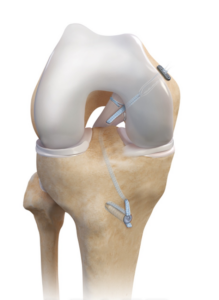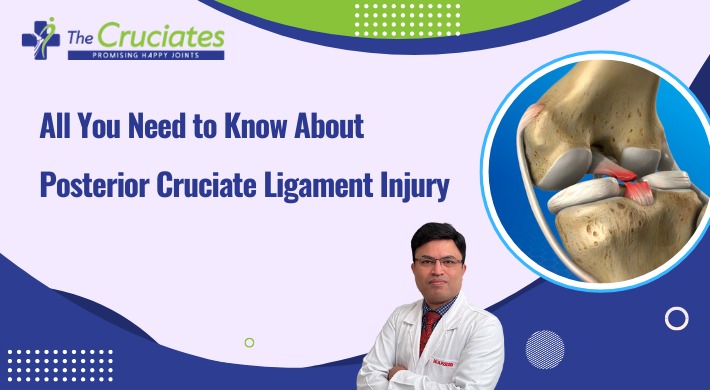Are you suffering from a Posterior cruciate ligament (PCL) injury? If yes, then you need to know all the details about it. In this blog post, we will discuss the structure and function of the PCL, the causes, symptoms, and treatment options of a PCL injury. We will also provide you with the best advice on finding a PCL surgeon who can help you manage the injury and provide the best possible outcome. So, if you or someone you know is suffering from a Posterior cruciate ligament Injury, read on to find out more.
What is the posterior cruciate ligament?
The posterior cruciate ligament, commonly known as the PCL, is a strong band of tissue located in the knee joint. It is one of the four major ligaments that provide stability and support to the knee. The PCL connects the femur (thigh bone) to the tibia (shin bone) at the back of the knee.
The PCL has a unique structure that is different from the other ligaments in the knee joint. It is wider and thicker than the anterior cruciate ligament (ACL) and is less prone to injury. The PCL also has a strong attachment to the bone, which makes it very stable.
The main function of the PCL is to prevent the tibia from moving too far back relative to the femur. It also helps to keep the knee joint in alignment, particularly when the knee is bent. Without the PCL, the knee joint would be unstable and prone to injury.

What are the causes of PCL injuries?
The most common cause of a PCL injury is trauma to the knee. This can occur in various situations, such as a fall or direct impact on the knee during sports or other physical activities. Additionally, a PCL injury can occur as a result of a car accident where the knee is forcefully pushed backward while the leg is bent.
Other possible causes of a PCL injury include a hyperextension injury, where the knee is pushed beyond its normal range of motion, and a non-contact injury, where the ligament is injured without any direct force being applied to the knee.
What are the symptoms of a PCL injury?
When a person experiences a posterior cruciate ligament (PCL) injury, they may notice a few distinct symptoms. The PCL is one of the ligaments in the knee joint and helps to keep the shinbone in place. Here are some of the symptoms that may indicate a PCL injury:
- Pain in the back of the knee: The person may feel a sharp pain or ache at the back of their knee, where the PCL is located.
- Swelling: PCL injuries can cause swelling in the knee joint, as the body attempts to protect the area from further damage.
- Difficulty walking or standing: The injured person may find it challenging to bear weight on their injured leg or may feel unstable while walking.
- Knee buckling: In some cases, the injured person’s knee may suddenly buckle or give way, especially when they are standing or walking on an uneven surface.
- Limited range of motion: A PCL injury may limit the knee’s range of motion, making it challenging to bend or straighten the leg fully.
- PCL reconstruction: If a person has severe or chronic PCL damage, they may require PCL reconstruction surgery, which involves replacing the damaged ligament with a graft. This procedure can help to restore stability to the knee joint and reduce symptoms.
What are the treatment options for a PCL injury?
The treatment for a PCL injury depends on the severity of the tear. A partial tear may not require surgery, while a complete tear may require PCL reconstruction or repair.
In cases where the PCL is completely torn and the patient has significant instability in the knee joint, surgery may be necessary to repair or reconstruct the ligament. During PCL reconstruction, a new ligament is created using a graft from another part of the body or donor tissue.
For PCL avulsion, which is a rare but severe type of injury where the PCL tears off from the bone, immediate surgery is usually necessary. The surgeon will reattach the ligament to the bone using screws or other fixation devices.
After surgery, physical therapy and rehabilitation are essential for regaining strength and mobility in the affected knee. Patients should follow their doctor’s instructions carefully to ensure proper healing and successful recovery. It is important to find the best PCL Surgeon in order to ensure proper diagnosis and treatment. Only a qualified and Best PCL Surgeon can assess your injury, diagnose the cause, and recommend the appropriate treatment plan.

Where to find the best PCL surgeon
“The Cruciates” is a team of highly experienced and skilled surgeons who are in the sports medicine field from a long time and have dealt with complicated sports injuries. Dr. Nagendra Prasad is one of the best arthroscopy surgeons in India leads the team. The Cruciates is committed to deliver high-quality services and would like to make sure that, you are satisfied with our work. The team Cruciates provides customized treatment and follow-up to each patient to make sure that everyone will achieve the desired level of recovery and rehabilitation to ensure an early return to sports.

